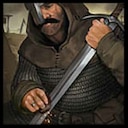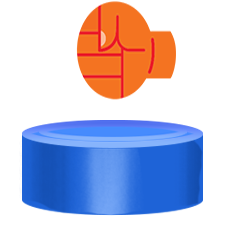Steam installeren
inloggen
|
taal
简体中文 (Chinees, vereenvoudigd)
繁體中文 (Chinees, traditioneel)
日本語 (Japans)
한국어 (Koreaans)
ไทย (Thai)
Български (Bulgaars)
Čeština (Tsjechisch)
Dansk (Deens)
Deutsch (Duits)
English (Engels)
Español-España (Spaans - Spanje)
Español - Latinoamérica (Spaans - Latijns-Amerika)
Ελληνικά (Grieks)
Français (Frans)
Italiano (Italiaans)
Bahasa Indonesia (Indonesisch)
Magyar (Hongaars)
Norsk (Noors)
Polski (Pools)
Português (Portugees - Portugal)
Português - Brasil (Braziliaans-Portugees)
Română (Roemeens)
Русский (Russisch)
Suomi (Fins)
Svenska (Zweeds)
Türkçe (Turks)
Tiếng Việt (Vietnamees)
Українська (Oekraïens)
Een vertaalprobleem melden









































Also, apologies for the multiple comments, 1000 character limit is pretty annoying.
Oh, and I should point out that this build is for medium-very late game, since fatigue neutral turns start becoming relevant the second you pick up underdog and nimble/BF.
Weakness: Lindwurms (but Lindwurms are a weakness for every build, honestly) and goblins (because goblin poison ranged attacks + nets + magic in a fort (especially with high ground or a swamp) is BS)
My banner build is also considerably different. I ignore MD (because they should never be on the front line anyway), don't take Indomitable (because they should never be on the front line), Nimble over Colossus, don't take Rotate (Footwork instead!), take Cleaver mastery (to disarm more often and cheaper), and Gifted over Bags & Belts (I suppose I could be persuaded towards bags and belts, honestly).
Feel free to test the idea out yourself.
B. building footwork on my backliners (I only use rotate on my tank, yes, that's right, I only use one, and he is BF, not nimble) so they can back away when rushed (Yes, smoke grenades are better, but also annoying to resupply), and
C. using whips to disarm and walk away.
Even so, my backliners will occasionally take a few hits, but that's why I build them nimble with bone plate armor.
6. It works particularly well against Undead, where geists and necromancers and priests try to hide exactly one tile behind a tanky enemy. Ignore the beefcake, swap to a polearm and poke/Longaxe/Polehammer/Polemace/whip the real annoyance instead.
Using this strat, I can usually kill 1-2 enemies (non-unhold enemies, anyway) before their melee units even engage, and that's on top of the 2-4 enemies my 2 berserker+Killing Frenzy archers can snipe (unless skeletons or goblins, of course)
How's *that* for efficiency?
5. Quick Hands also enables another strategy: Frontliners can start as "backliners" just fine (well, the 2-handed frontliners more so than duelists), so you can start with a compact formation to protect 2 archer/throwers + banner against orc charges.
This bring up a small quibble I have against 2Hammer AoE (I use a mix of 2Handers instead): the ability to push enemies back is *bad* because it enables enemies to refocus their movement towards your archers/banner, who have much lower MD. My ways around this particular issue are
Rather than waiting one more turn, a quick swap frontline bro with a jagged pike in their pocket can quick swap to it (0AP), step one tile forwards (2 AP, 0 Fat with Pathfinder on normal terrain, 1 or 2 otherwise), swing that possibly inflicts a bleed (5 AP, 12 Fat), then step back in formation (again, 0 Fat with.
Considering a bro regains 15 Fat/turn, that is fatigue neutral on most terrain, and only a small amount of Fat gain in bad terrain.
3. If you *do* kill all 3 enemies adjacent with an AoE (unlikely, I know), or another bro is in danger of dying to a tanky enemy (think orcs, undead heroes, swordmasters, honor guards, knights, champions, etc.), sometimes it is better to use your 6 remaining AP to swap to a pole hammer and either batter/demolish armor the scary enemy so they die faster over damaging the chaff in front of you.